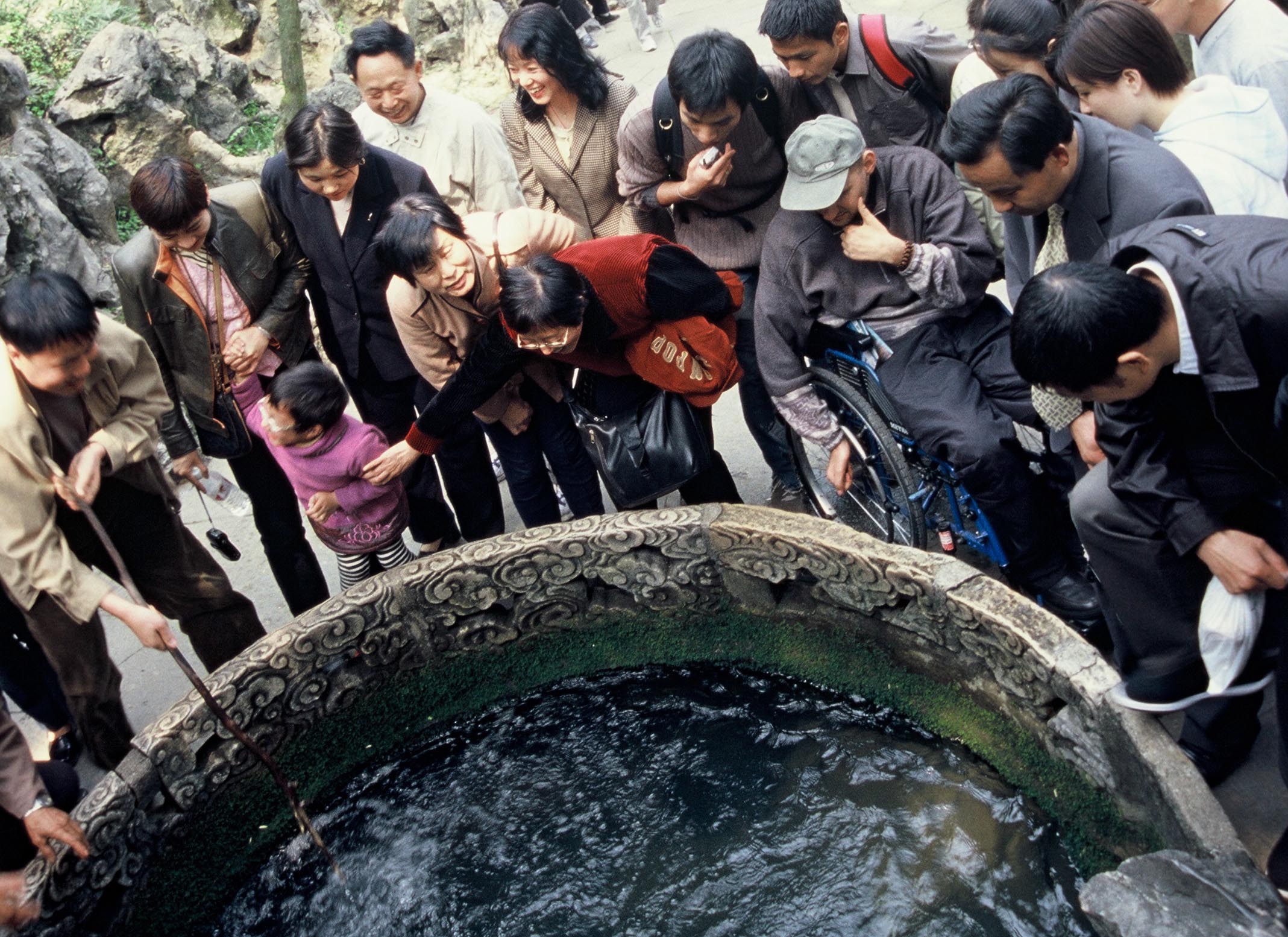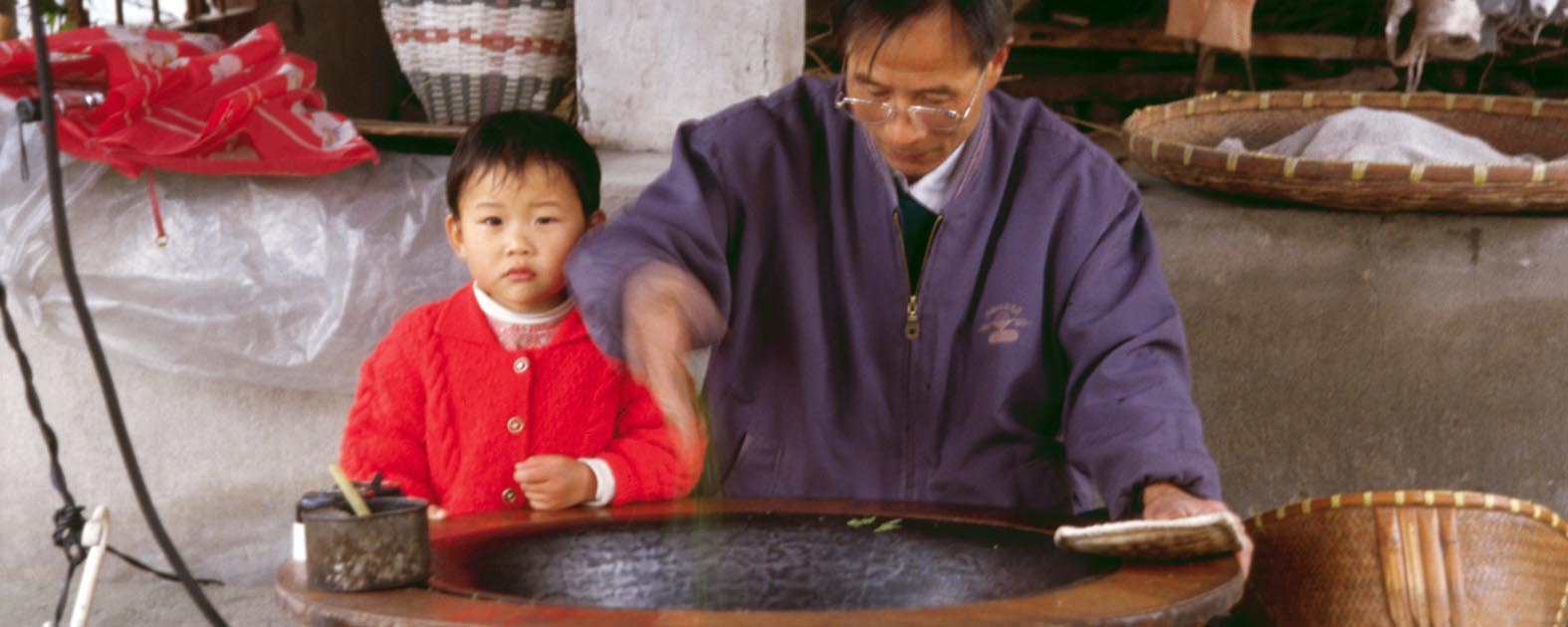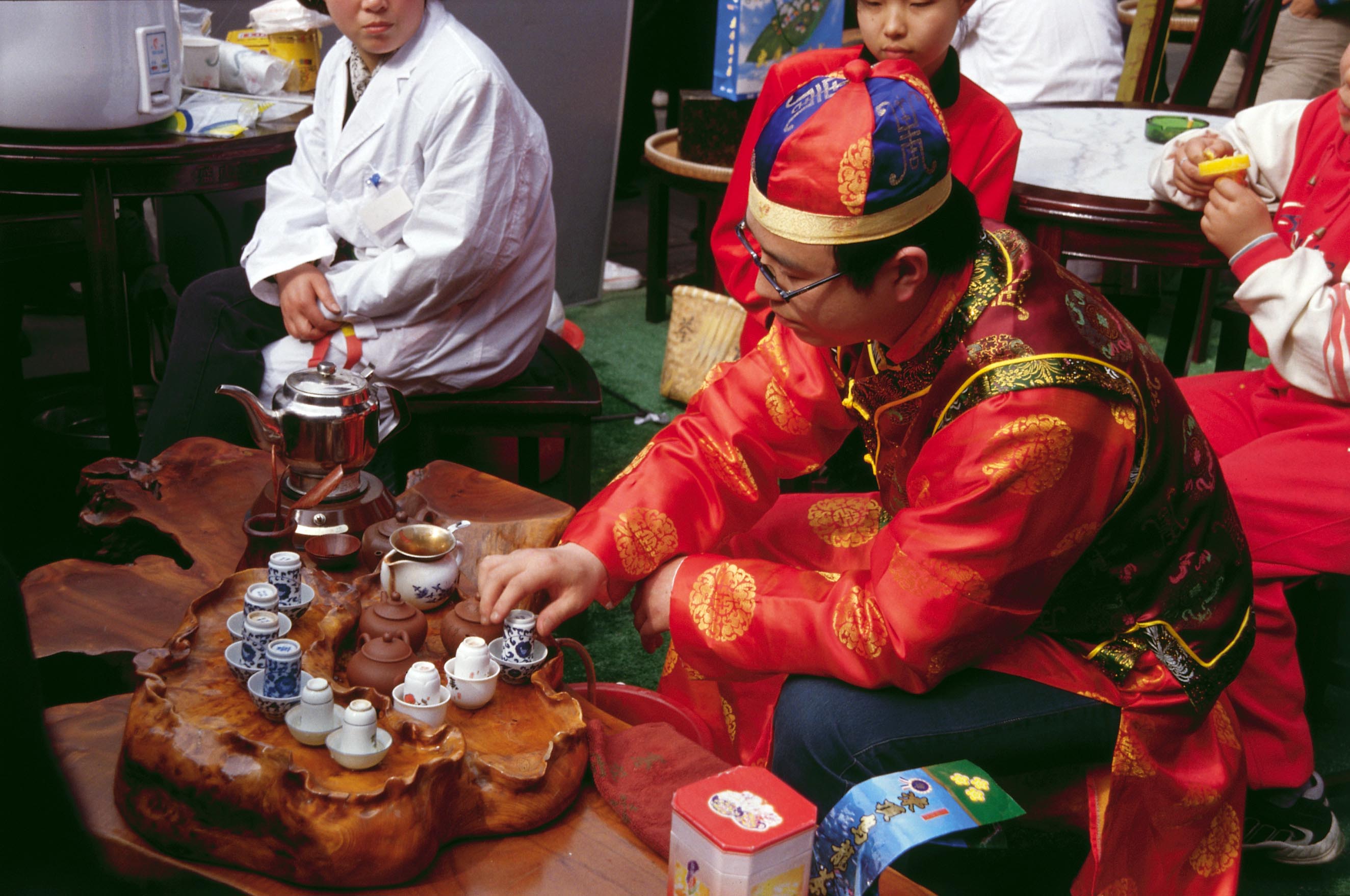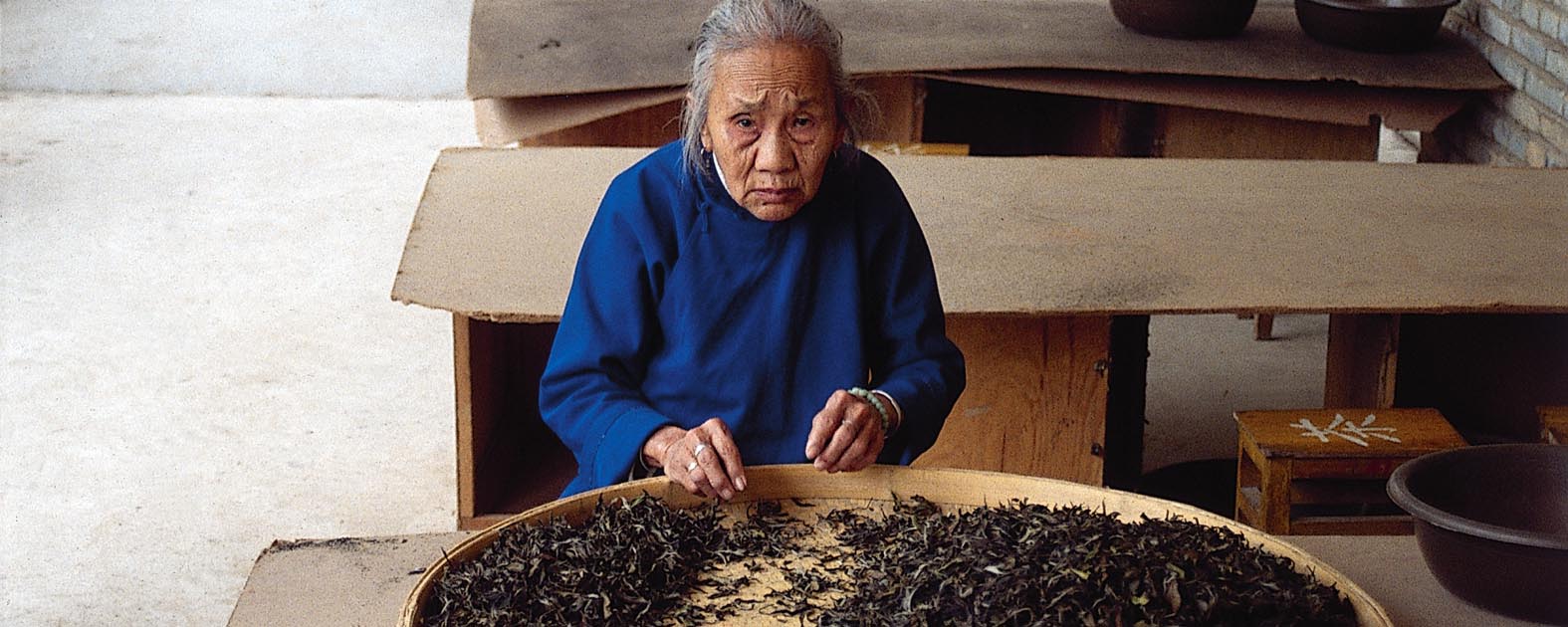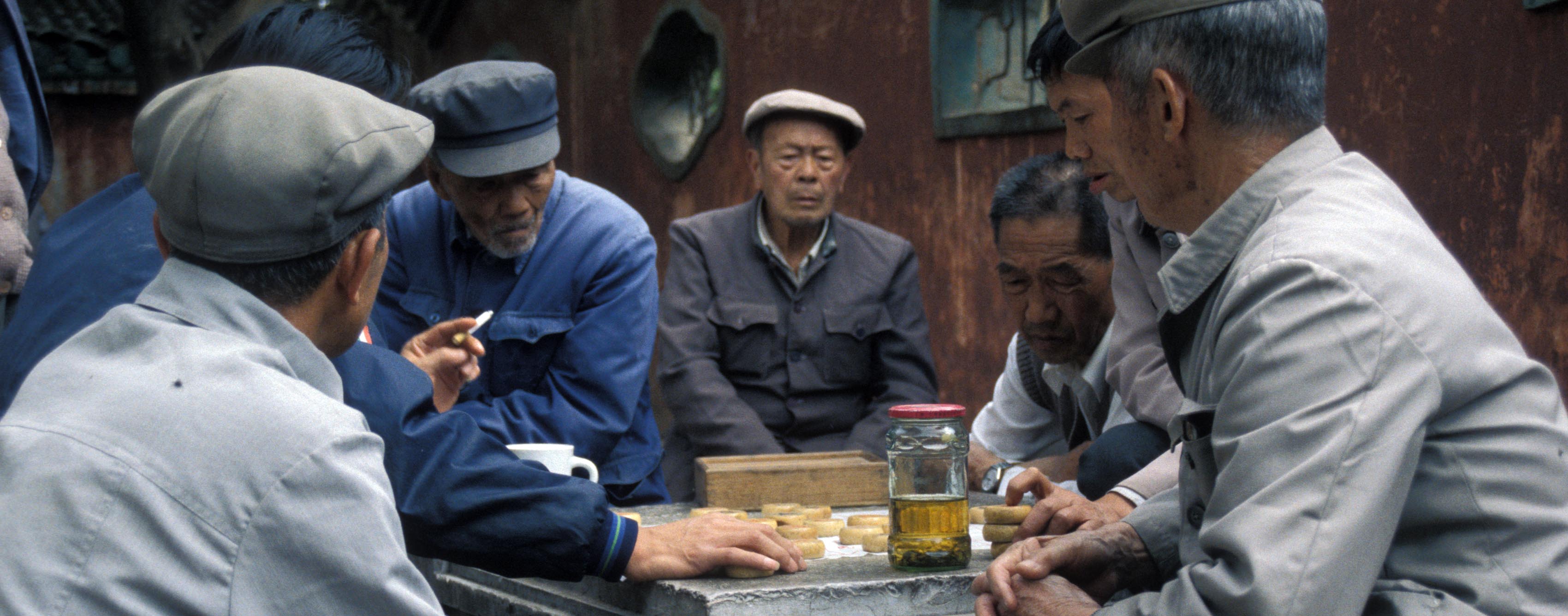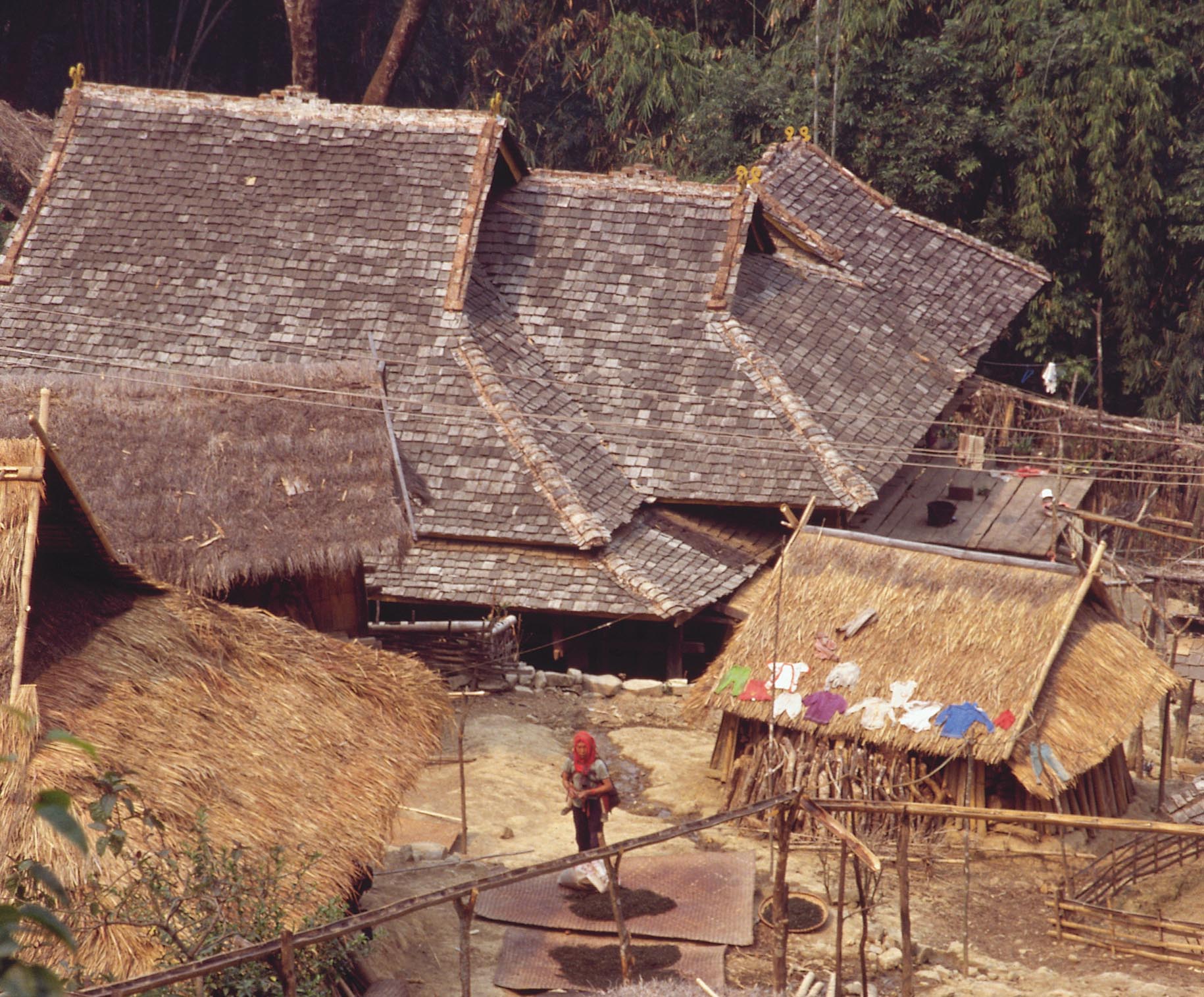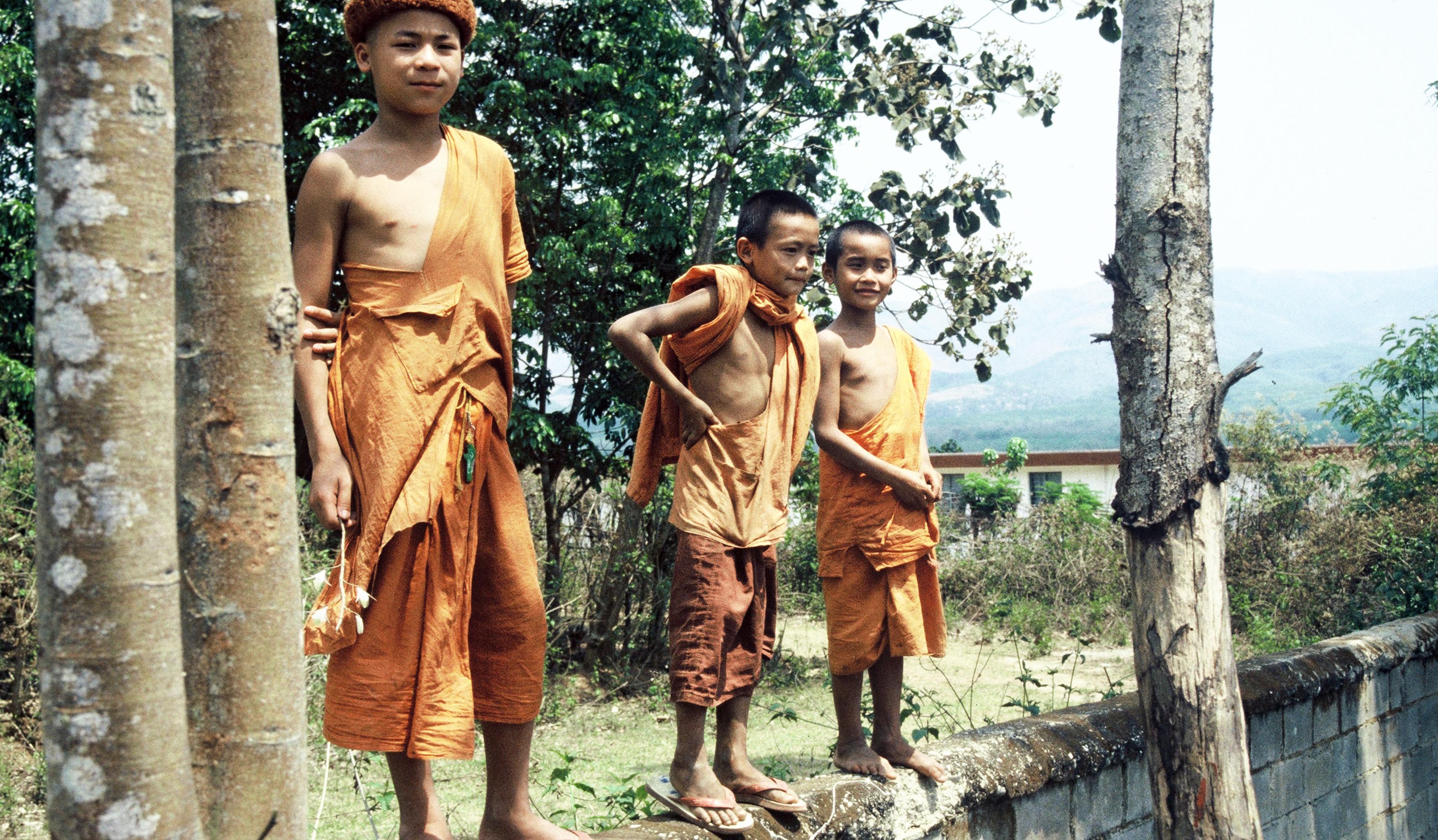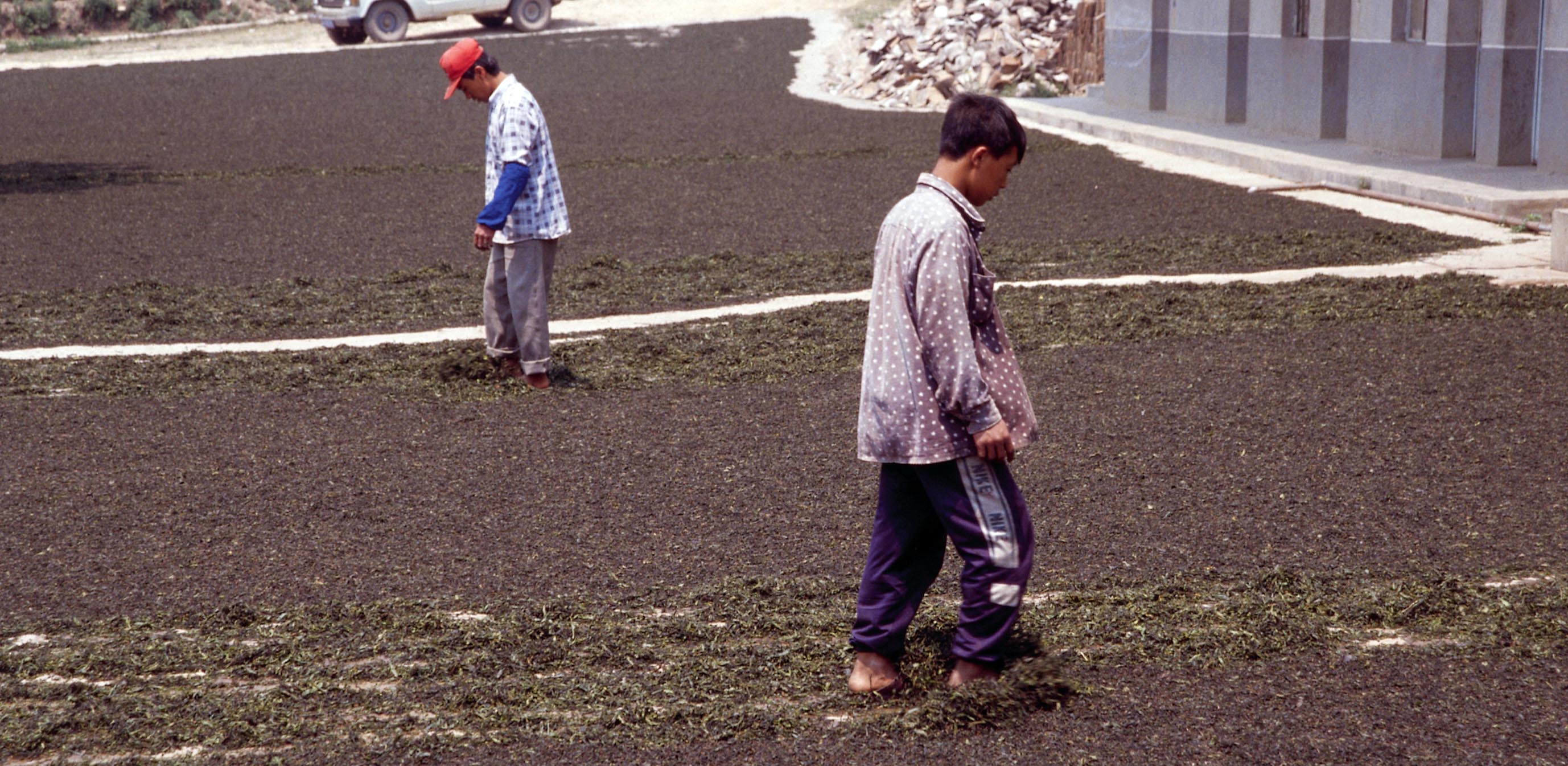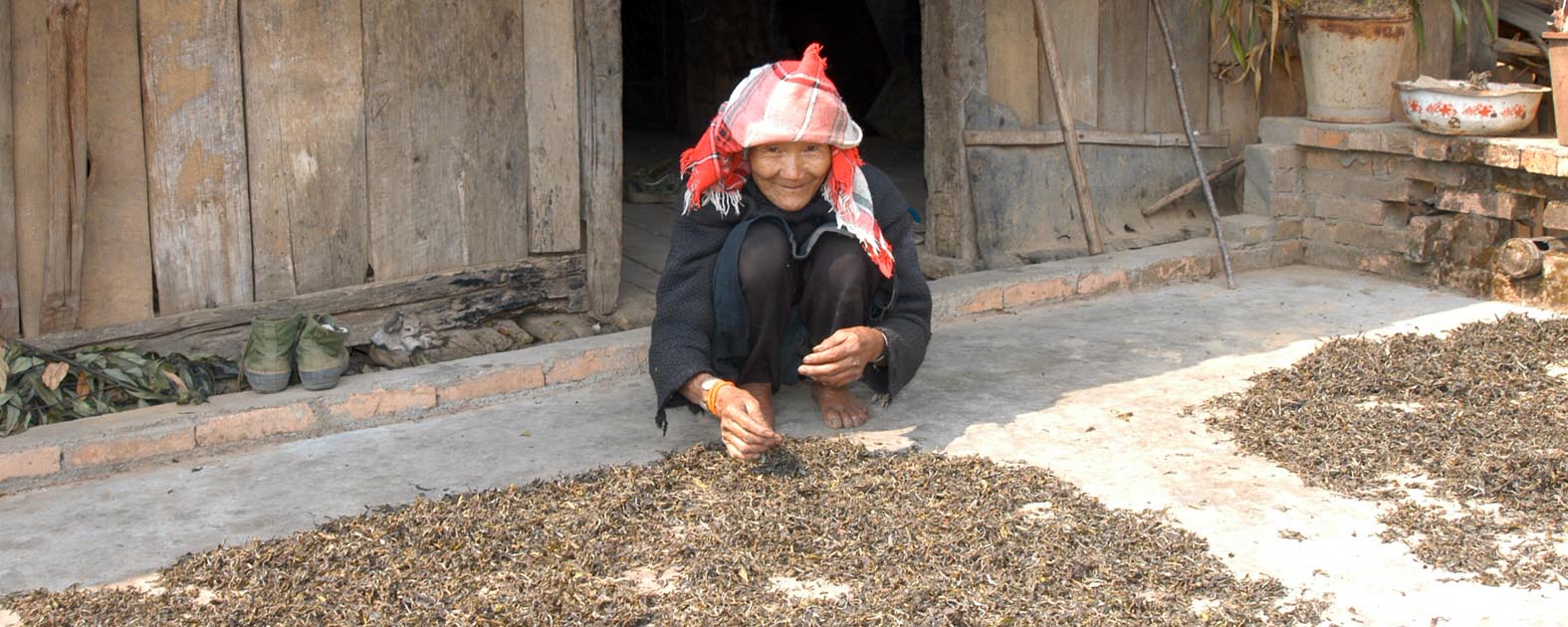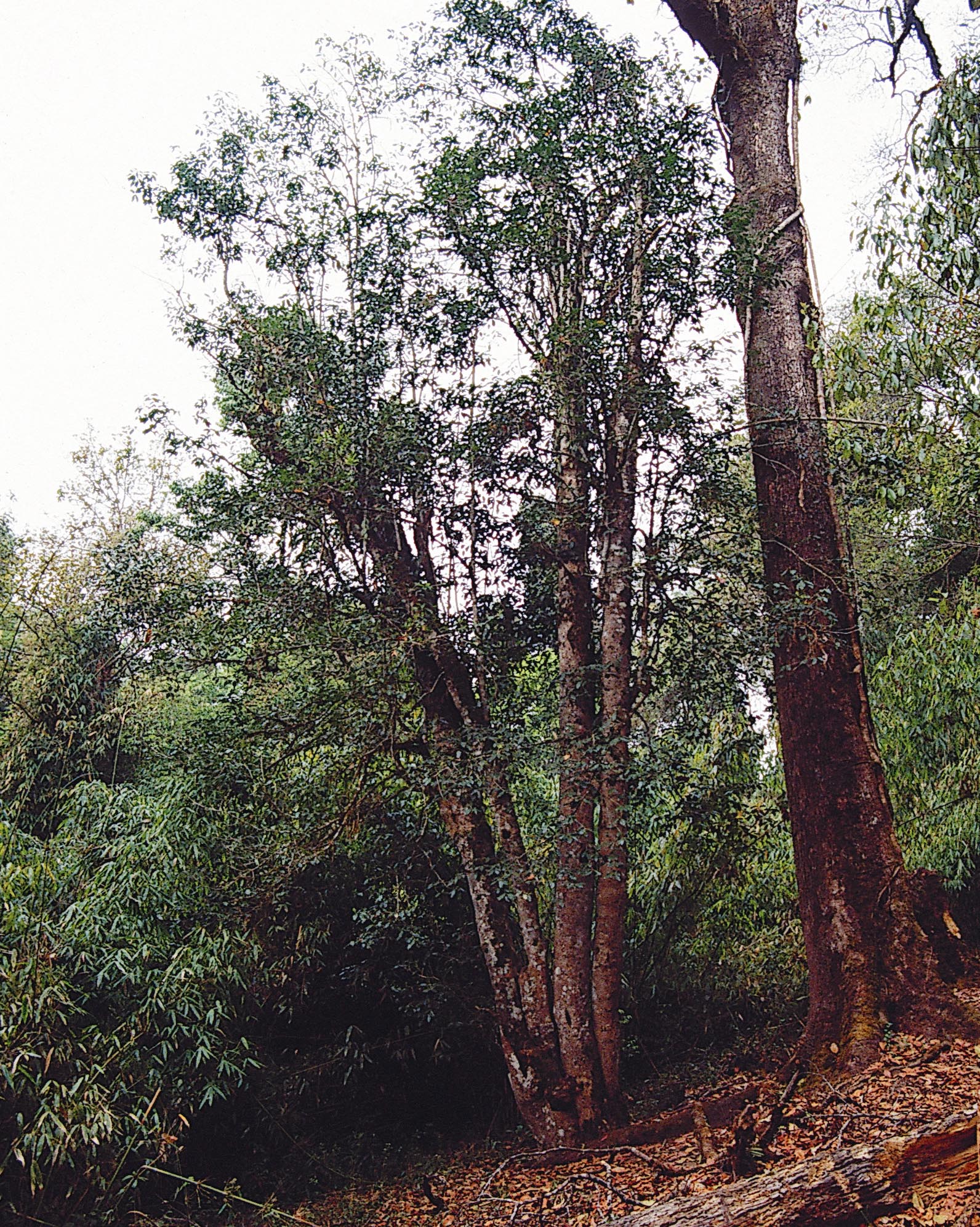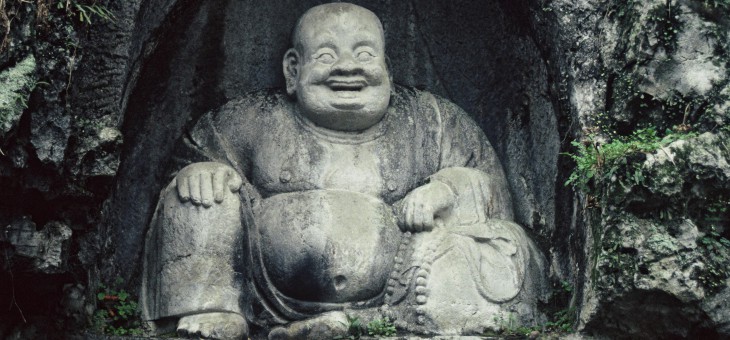
“In China tea was originally prepared using tea leaves from wild trees, which would be cut down to be harvested, since uncut they could grow to fifty foot or more. Only later, in the 4th century, did tea enter cultural consciousness. The tea plant began to be cultivated and tea became a market commodity. ”
This inconspicuous piece of information, often included in publications on tea, sowed a seed of temptation in the minds of the Tea-devotees.
Dawn was breaking and the British jumbo jet roared over the snowy vastness of Siberia as it carried our expedition to its first destination – the airport in Peking. The hours went by and Lake Baikal appeared below us. The white of the snowy forests gradually turned to reddish brown, and the sparsely scattered tips of yurts showed that we were flying over Mongolia. The Gobi desert, feared by the caravans for so many centuries, gave way to more densely settled areas of Central China. The plain began to ripple and undulate and across the forested summits of the hills we saw a thread weaving up and down. It was that symbol of Chinese majesty – the Great Wall.
To see contemporary Peking is to sober up rapidly from any illusions of a China full of romantic nooks, refined gardens, pagodas and bonsais. Peking today is one vast building site, with new banks, export company buildings and hotels shooting up to immense heights in concrete, glass and steel. Like it or not, anyone used to Central European dimensions and proportions has to feel at the least a certain admiration at the sheer scale that dominates in the great cities of the Middle Kingdom. The squares are larger, the boulevards longer, the streets more crowded and the temples grander.
Marco Polo went through the town of Hangzhou on his 13th century travels and wrote that it was one of the superb in the world. The town interests us because it produces one of the most celebrated of Chinese teas. Long Jing, which can be translated as “dragon well” is the name of an excellent green tea that has maintained the traditions of primitive hand production over the centuries except for the fact that the pans in which the tea leaves are processed are no longer heated over a fire, but are electrically heated.
The highest quality Long Jing is produced in a village of the same name, and always in April. At this season pale green leaves appear on the tea bushes after their winter rest, and are torn off by hand while still undeveloped. In size they are no larger than 2 cm and several hundred must be gathered to make 100 gr. Over one season private farmers manage to produce around 30-50 kg of this highest quality tea, which sells for a price varying in the range Y 100 – 125,-. but as the weather becomes hotter the quality of the tea falls, and so does the price. We buy the first samples of fresh Long Jing and look forward to the hotel, since everyone at last has his own tea jar waiting there, with the remains of tinned mandarin compote already washed out of it!
In the train a routine police check on the contents of pockets and baggage is underway and beyond the windows the face of the landscape is gradually changing. The foothills of Huangshan begin to rise on the horizon. We cross the borders of our second tea province – Anhui – and head for the town of Qimen which has given its name to a world-famous black tea. The police officer conducting the checks in the train asks us where we are going. Apparently it’s just a formality, but our subsequent meeting with armed police in the station at the town of Qimen is far from a formality. We are not allowed to leave the station and enter the “forbidden city”. We have to leave by the next train, but this doesn’t leave for another 24 hours…We have already long been swallowed up by a hundred-headed crowd of curious passers-by. The chief of police, however, who has been informed of our arrival by walkie-talkie direct from the train, gives way after some heated discussion and allows us to stay in the town in a hotel designated by himself (and much too expensive for us). We are escorted to the hotel, which we are not allowed to leave (armed police guard the doors of our room) in a police vehicle. We have to pay the police chief for transport from the station to the hotel! It is all very strange, but we don’t have the courage to ask why the town is hermetically sealed. We’re afraid we would be taken for spies. In the morning we pay the police chief for the hotel and once again we take the police vehicle (for a bribe), this time to the bus station. It is only when our backpacks have been loaded onto the bus that the chief thaws, takes his leave in laddish style and gives us his visiting-card – in case we need something again. In the bus our interpreter explains that the man’s name and police function is written on one side of the card, and on the other side the same person offers transport and accommodation services as a small businessman… Outside the town we pass a barrier that prevents foreigners entering the town. The locals have to show a special identity card.
One of the most famous of Chinese tea provinces, celebrated above all for the production of white and half green teas, is Fujian [futien]. In its northern area the superb Wuishan mountain range rises to heights of more than 2000 metres. And tea is cultivated everywhere! We start to feel embarrassed with our jars at our belts, since here tea is drunk from special small bowls of unglazed earthenware. The whole ritual of preparing the tea, which is called “Kungfu Cha”, consists of pouring boiling water several times onto a relatively large quantity of half green tea in a small teapot. Roughly a minute after scalding the leaves in the pot, the light brown infusion is poured into the tiny half-decilitre bowls. This procedure is repeated up to seven times, depending on the quality of the tea. We therefore buy Kungfu sets and learn to prepare the high quality half-green Tie Guan Yin.
We have discovered that a mere 65 km away (meaning roughly half a day’s wild d bus ride along winding stony roads), the “aristocrat” among White teas – Bai Mu Dan – is gathered and processed around the town of Jianyang.
The production of Baimudan is very simple. The picked tea is spread out on a shallow baskets woven of bamboo and roughly 1 metre in diameter, and left to wilt in the sun for several hours. The baskets are then transferred to an attic space under a scorched roof, where it is very hot and dry. The tea is subsequently shaken manually with circular but jerky movements at roughly half-hour intervals until it is thoroughly dried.
The next phase is the crucial one for the establishment of the price, and this is hand-sorting. Young and old Chinese women, and sometimes even whole families including children sit down around the flat baskets and painstakingly remove pieces of leafstalk, dark, over-fermented leaves and the remains of branches. The sweetish superfine taste of the downy white tips must not be muddied in the brew by the presence of the bitter tannic acids contained in older leaves and stalks. We find that for the preparation of this kind of tea it is very practical to use a bowl which broadens conically towards the rim and has a cover and a saucer. The cover has various advantages. It means that steam from the hot water cannot escape and so scalds any tea leaves above the surface. The tea keeps warm, and the intoxicating aroma that could otherwise have escaped without being caught be the vigilant smell cells of the honest tea-drinker is preserved under the lid. Another decided advantage of the lid is that just by sliding it a little way of the cup you can create a slit through which you can drink the tea without getting the scalded tea-leaves in your mouth. The saucer means that you can carry the tea around “painlessly”.
We are now in our third week in China. We are beginning to get used to the local conditions and so we take in the information that the train to Kunming, the capital of the tea province of Yunnan takes 60 hours without a trace of surprise. We amuse ourselves on the way by trying all the snacks offered by the vendors on the stations (poultry claws, dried fish, snails and so on), and we compete to see who is the bravest. The result of the tastings is agreement that the best delicacy is “nyo ro”, which is spiced drief beef, and the worst of all is instant noodles. Our jars mean that we never miss any chance to taste the tea.
The South-West province of Yunnan is considered a paradise for nature devotees. It attracts ornithologists, zoologists, entomologists, geologists, botanists. More than half of all species of fauna in China are to be found here, and the province is also home to a third of all Chinese ethnic minorities. We know that Yunnan will be a paradise for devotees of tea as well. While the tropical but moderate climate of the region allows the cultivation of rice, tobacco, sugar cane, pineapples, bananas and mainly tea, original tropical primeval forests remain unfelled on the south-west border with Laos and Burma (now Myanmar). Somewhere there, hidden from the eyes of tourists, surrounded by wild jungle and guarded by the Chinese border forces, the 100-foot tea tree Cha Shu Wang, or Tea King, has grown toward the sky for 1,700 years. The oldest of its species in the world.
As the distance from the capital of the province increases, travellers’ comfort diminishes. After 30 hours of a wild ride by so-called “sleeper”, which is a bus that instead of seats has unbelievably short and fantastically uncomfortable seats aligned with the direction of the journey, we reach the very heart of an autonomous region with the charming name Xishuangbanna – the town Jinglinghong. This area is the home of the Dai national minority.
They are a people who historically, culturally and ethnically have more in common with the Southern Thai peoples, and also differ from the other inhabitants of China in having been the least remoulded by communist machinery. The marks of the communist cultural revolution are hard to find. People dress colourfully, the cuisine is spicy and diverse, there is life in the small Buddhist monasteries and all around – the atmosphere is distinctly un-Chinese.
We stay in little bamboo huts and gradually get used to insects and spiders of a size we never imagined before. In the restaurants we uninhibitedly order toads, snakes or fat worms, artificially bred – we are told – in the bodies of dead pigs. Our enthusiasm for all this exotic world around us is enhanced by the brilliant range of teas produced in the area. Teas of green type Mao Feng or Yunnan Lu, teas of red type Yunnan Hong, and above all darj teas Yunnan Puer, loose or rolled into all kinds of shapes, evoke states of euphoria. The jars are worked hard.
We learn from villagers and private tea producers that the Yunnan red tea so highly rated by Europeans isn’t drunk here at all. The locals don’t find the taste appealing, and so it is produced only for export. The green tea on the other hand is a great favourite, and drunk on every occasion. We try to find out a little more about the closely guarded secret of how puer is processed. It is a dark, twice fermented tea, distinguished by a fine mustiness on the surface and the unusual scent of old Buddhist temples. But we don’t have the necessary permission from the Ministries of Secret Facts, Agriculture and Foreign Affairs, and so the gates of the 13th chamber for the production of puer remain closed to us. We have no alternative but to let our imaginations do the work…
The goal of our journey, however, is within our reach. Starting out early from the last town indicated on the map, Menghai, we head for the Burmese border. We are travelling in a bus that half an hour before our departure we still thought was a disassembled wreck. The going gets really rough. On the stony track the bus whimpers, scrapes and squeals. Villagers in traditional dress are taking the most extraordinary objects with them such as a giant electro-motor. They are squashed in fours on seats for two and all of them (including the old ladies) smoke. A group of hens travelling loose take a fancy to our backpacks. Border guiards returning from leave look disorderly and are slightly drunk. We feel as if we don’t belong in these parts. Towards evening we reach an anonymous settlement on the frontier itself. The only walled building on the village green belongs to the commander of the border guards. We are aware that since China has no border contact with Burma (but only by air) our presence is highly suspicious. Our interpreter Petr has difficulty understanding fragments of conversations in the local dialect. We are the first “long noses” (as the Chinese call us) ever to have come to this place in history! Once again we are arrested.
The drama of lengthy explanations begins again. But what is to be done with us? The natives don’t want to let us in, the soldiers want to deport us, but the bus isn’t leaving until the next morning. Salvation in this hopeless situation comes unexpectedly. The Tea King himself rescues us. When the local inhabitants hear that we had come all the way from faraway “Czechoslavia” to see their Tea King, we are all at once “in cdevotee”. We are allowed accommodation for Y 5,- each in a wooden animal shed, and are even invited to the bamboo “culture house” which houses a television powered by petrol aggregate. “Don’t go out at night without a torch. There are cobras everywhere”, the soldiers warn us before we go to bed. They are looking forward to the next day, since they have made a deal with us to provide us with an armed escort to the King for 40,- Y.
Over the last few years we had travelled through many tea countries. We had been soaked to the skin in tea gardens in the foothills of the Himalayas in Darjeeling, we had warmed ourselves at fires in the clay huts of Nepalese shepherds, and drunk their salty tea with rancid yak milk. In North-East India we had bowed before the immensity of the River Brahmaputra, which brings life to the huge tea valley of Assam. In the middle of the bewitchingly beautiful tea island of Sri Lanka we had meditated with Buddhist monks, and near the Georgian frontier and with machine guns trained on us we had explained to armed Turks that it was interest in tea that had brought us so far. On our tea pilgrimages we had met many tea experts and tea laymen, and we had discussed with them whether it would be possible to find the Tea King somewhere. But we had always had the feeling that our conversations were verging on the borders of fantasy and legend. A few people had heard of the King, some had an inkling, but none at all could point to a place on a map,
But we , the Tea-devotees of Prague, actually found the King on the 6th of April 1997 at 10.15 all-China time…



